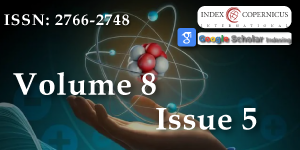Study of Tribological Properties of Disc Mills Wear in Furniture Production
Main Article Content
Abstract
The article is devoted to the study of the tribological behavior, particularly the wear mechanisms and the shape of the cutting surfaces of Disc mills for various purposes and designs when processing furniture parts made of various wood materials. The changes in the length of the cutting edge of a cutting tool with soldered teeth made of hard alloy were calculated when processing grooves on chipboard and MDF. All results are presented in tables and graphs generated using Microsoft Excel. At the end, the recommendations to enhance tool condition and longevity and carry out further work in this area are summed up.
Article Details
Copyright (c) 2025 Aliyev ZH, et al.

This work is licensed under a Creative Commons Attribution 4.0 International License.
1. Trejo J, Polli ML, Da Rocha MP, Torres Á, Belini UL, Ninin P. Working limit of the circular saws in the cutting of high density fiberboard (HDF) through a nonlinear model and differential equations. Eur J Wood Prod. 2020;78:1183–1194. Available from: https://doi.org/10.1007/s00107-020-01596-9
2. Kang J, Zhang H, Zhang Z, Bai T, Zuo C, Guo J, et al. Investigating damage mechanisms of honeycomb cores machined with PCD circular saw blades. J Mater Process Technol. 2024;327:118381. Available from: https://doi.org/10.1016/j.jmatprotec.2024.118381
3. Sandak J, Orlowski K. Machine vision detection of the circular saw vibrations. J Mach Eng. 2018;18(3):67–77. Available from: http://dx.doi.org/10.5604/01.3001.0012.4617
4. Javidani M, Heidari M, Jahazi M. Enhancing the tribological performance of tool steels for wood-processing applications: A comprehensive review. Metals. 2023;13(8):1460. Available from: https://doi.org/10.3390/met13081460
5. Abbasov VA, Bashirov RJ. Features of ultrasound application in plasma-mechanical processing of parts made of hard-to-process materials. Metal Work Mater Sci. 2022;24(3):53-65. Available from: https://doi.org/10.17212/1994-6309-2022-24.3-53-65
6. Licow R, Chuchala D, Deja M, Orlowski KA, Taube P. Effect of pine impregnation and feed speed on sound level and cutting power in wood sawing. J Clean Prod. 2020;272:122833. Available from: https://doi.org/10.1016/j.jclepro.2020.122833
7. Al-Asadi MM, Al-Tameemi HA. A review of tribological properties and deposition methods for selected hard protective coatings. Tribol Int. 2022;176:107919. Available from: https://doi.org/10.1016/j.triboint.2022.107919
8. Fanidi O, Kostryukov AA, Shchedrin AV, Ignatkin IYu. Comparison of analytical and experimental force in cylindrical workpiece drawing process. Tribol Ind. 2021;43(1):1–11. Available from: https://doi.org/10.24874/ti.1000.11.20.02
9. Kubich V, Pavlenko D, Fasol Y, Syvachuk O. Comparison of high-temperature wear resistance of gas-flame and ion-plasma sealing coatings with 0.1% yttrium. Tribol Ind. 2024;46(3):486–498. Available from: https://doi.org/10.24874/ti.1587.11.23.03
10. Kabaldin YG, Shatagin DA. Artificial intelligence and cyberphysical machining systems in digital production. Russ Eng Res. 2020;40:292–296. Available from: https://doi.org/10.3103/S1068798X20040115





